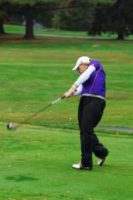28 May Fore! Most Common Golf Injuries Result From Getting Hit By Club or Ball
MedicalResearch.com Interview with:
Gary Smith, MD, DrPH
Director, Center for Injury Research and Policy
Nationwide Children’s Hospital
Columbus, OH
MedicalResearch.com: What is the background for this study?
Response: Golf is enjoyed worldwide as a leisure activity and competitive sport. While golf is viewed as a low-risk sport, acute traumatic and overuse injuries do occur. Previous studies have generally focused on the clinical aspects of golf-related injuries. Few studies examine injuries that occurred during practice at home or school, or due to conditions or hazards on a golf course.
 MedicalResearch.com: What are the main findings?
MedicalResearch.com: What are the main findings?
Response: During 1990 through 2011, an estimated 663,471 individuals ≥7 years old were treated in US emergency departments for golf-related injuries, averaging 30,158 annually or 12.3 individuals per 10,000 golf participants. Patients 18-54 years old accounted for 42.2% of injuries, but injury rates per 10,000 golf participants were highest among individuals 7-17 years old (22.1) and ≥55 years old (21.8) compared with 18-54 years old (7.6). Patients ≥55 years old had a hospital admission rate that was 5.01 times higher than that of younger patients.
On average, more than 30,000 individuals ≥7 years of age were treated for a golf-related injury annually during the 22-year study period, equaling one person every 17 minutes. These injuries are frequent, in part, because golf attracts a large and diverse population of participants of various skill levels and ages via the handicap system.
Injured by a golf club (23.4%) or struck by a golf ball (16.0%) were the most common specified mechanisms of injury. The head/neck was the most frequently injured body region (36.2%), and sprain/strain (30.6%) was the most common type of injury. Most patients were treated and released (93.7%) and 5.9% required hospitalization.
MedicalResearch.com: What should readers take away from your report?
Response: In this study, the head/neck was the most common body region injured, and most of these injuries were associated with a golf club or a golf ball. Although golf has been played for centuries, it was not until 1999 that the Royal and Ancient Golf Club of St. Andrews in Britain and the United States Golf Association published a rule in response to golf-related head injuries. Golfers are instructed to ensure that other players are out of range of the club, ball, or any debris during a swing and to alert other players in the line of a shot. Following established guidelines and being aware of surroundings during play can help reduce golf-related injury rates. Adult supervision of children playing golf and teaching safety guidelines to children can help prevent pediatric golf-related injuries.
Professional assessment and instruction can correct technical errors and reduce the risk of injury from poor technique. Modifying swing technique may lower the potential for injury by lessening stress on the musculoskeletal system, including the lower back. Strengthening and conditioning muscles along with proper warm-up exercises may further mitigate injury risk. The type of equipment can also influence the risk of injury. The material, flexibility and resistance of a club should be tailored to a golfer’s characteristics; for example, using too light of a club may predispose the player to injury because it can be swung harder than necessary.
MedicalResearch.com: What recommendations do you have for future research as a result of this study?
Response: Although golf is a source of injury among all age groups, the frequency and rate of injury were higher at the two ends of the age spectrum (age 7-17 years and 55 years and older). Given the higher injury and hospital admission rates of patients ≥55 years, this age group merits the special attention of additional research and injury prevention efforts.
Disclosures: The authors have no financial disclosures or conflicts of interest relevant to this study.
MedicalResearch.com: Thank you for your contribution to the MedicalResearch.com community.
Citation:
Golf-related injuries treated in United States emergency departments
Walsh, Brittany A. et al.
The American Journal of Emergency Medicine , Volume 0 , Issue 0
May 23 2017
Note: Content is Not intended as medical advice.
Please consult your health care provider regarding your specific medical condition and questions.
More Medical Research Interviews on MedicalResearch.com
[wysija_form id=”5″]
Last Updated on May 28, 2017 by Marie Benz MD FAAD

